HIStalk Interviews Adem Arslani, Director of IS/Clinical Informatics, Advocate Good Shepherd Hospital
Adem Arslani is director of information systems and clinical informatics at Advocate Good Shepherd Hospital of Oak Brook, IL.
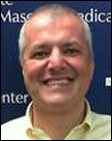
Tell me about yourself and the hospital.
I’m the director of information systems and clinical informatics at Advocate Good Shepherd Hospital. I recently transitioned here from another Advocate hospital. For four and half years, I served at Advocate Illinois Masonic Hospital in Chicago as a director of IS and informatics.
Advocate Good Shepherd is a community based-hospital. It’s smaller, licensed for about 169 beds,. The real challenge is that 80 percent of our physicians are private physicians, whereas Advocate Illinois Masonic Medical Center was an academic environment and actually a little easier to work with the EMRs and adoption.
Not many people in IT leadership roles have nurse credentials as well as being a veteran. How has your background made you more effective?
Understanding the clinician stakeholders and having that experience of working out on floors and understanding first hand has had a profound impact on my ability to do the work.
In the military, I served under the Signal Corps. That’s where I was introduced to mobile subscriber equipment and worked with technology. Our mission was to deploy anywhere and essentially set up communications within 24 hours in a total mobile environment. That was just an incredible experience.
Back in my days as a nursing student in University of Michigan, I was in the National Guard Signal Corps and ROTC. I was at the right place at the right time. At University of Michigan, we had a ubiquitous interactive TV system that was developed by a professor of engineering and the School of Nursing. They couldn’t get the equipment running. One of my instructors knew I had a military background. They invested some money and time and in six months they couldn’t operationalize this videoconferencing system.
I took a look at it and then had it up and running in a couple of days. The professor of engineering wanted to meet with me. She offered me a job over at the School of Computer Engineering, where I became a teaching assistant for a graduate-level topic course, Visual Communications. My work at the University of Michigan was, “How can we leverage technology to advance the practice of medicine?” That’s when I really became interested and intrigued in the role of informatics.
In a project that I implemented — and this was back in 1997 — I worked to design alternative nursing therapy for an 11-year-old bone marrow transplant patient. She was very sad, very emotional and on kind of a roller coaster ride. Having a nursing experience and empathizing with that patient and having some technology experience, the alternative therapy that I elected was PC-based videoconferencing over the Internet to help her deal with the coping and isolation. CU-SeeMe was one of the first videoconferencing applications. it was developed at Cornell University from a physician that wanted to share images. This was a free application. I contacted the school, they had it. They were an Apple environment, the University of Michigan was a PC environment, but that was the beauty of this application — it didn’t matter what platform you were on.
We established Internet videoconferencing out of a patient room. Bone marrow transplant patients are high risk of infection and she expressed that she missed her friends. She was isolated for six months and it was just sad. When we did this, her school friends in support of her, shaved their heads. They mailed her a T-shirt that she wore. They were able to see this. She was interacting via a modem connection and the video was very effective. That’s what gave me the recognition into the world of informatics. The American Journal of Nursing found out about the project. It was published through Sigma Beta Tau in quite a number of countries and I presented it at an American Journal of Nursing conference. From there, I landed my first informatics position at Mercy Health System in Laredo, Texas.
The military does an excellent job in leadership development and they have standardized methodologies around risk management, problem solving, and the Military Decision Making Process, MDMP. These processes and methodologies are second nature and are used with every problem or challenge leaders face. I have found that this approach has served me well when implementing IT and informatics solutions or leading teams. These methodologies and skill sets are atypical in information technology structures.
Nursing curriculum stresses utilizing critical thinking skills and problem solving. In addition, we understand how to operationalize technology, and often IT is removed from the day-to-day operations of a nursing unit, for example, failing to understand the kinds of impact certain decisions can have.
You’ve worked for several years with EMR speech recognition. What experience do you have from the work? How do you see speech recognition involving clinicians changing?
One of the imperatives — especially with the government mandates with Meaningful Use and HITECH – is that everybody is on the march to improve the EMR adaption for clinicians. That was the whole emphasis of why speech really intrigued me. When you take a look at the consumer market out there, it’s being introduced in the TVs we buy today. With my children, they’re experiencing gesture technology and speech with Wii consoles and with Microsoft XBox 360. This is the generation that’s going to expect this technology in the future. They’re already familiar with it.
When you take a look at the healthcare setting, we’re always behind in the implementation and adoption of a lot of technologies that could make us more efficient and improve the workflow, patient safety, and all of those good outcomes that we’re striving for. When I came to Masonic, we were doing pretty good with physician order entry, but we weren’t doing so well with adoption of the structured physician documentation system from Cerner’s PowerNote, for example. We were just starting down that path.
The complaint from physicians were that there are a lot of clicks. You have to navigate a lot, and it just doesn’t lend itself really well to physician documentation of how they like to write physician notes. We embarked on a pilot, just for a proof of concept, with Nuance to see how physicians reacted to it. We targeted seven hospitalists and they went very well. Our chief of surgery and some other folks that had never utilized the EMR found out that we were piloting Dragon. Right away, the message to myself and CEO and finance was, “I don’t use the EMR, but you guys are piloting Dragon and I would love to use Dragon. I will try to use the EMR if I have access to Dragon.”
That was very powerful and sent a very loud and clear message to our leadership. I got great support to target the Department of Surgery. We executed a license for that department. A short time after trialing this, it became clear in my mind that the only way you can really make an impact is through a site license. We wanted to give everybody access to this technology. The haves and have-nots limited our ability to leverage the full capabilities of Dragon. I have plenty of data to prove my point. When we have a site license, anybody can use Dragon. That gives a lot more flexibility from how we deploy a technology and how we can support it.
Oftentimes these products get implemented 50 licenses at a time. Who’s going to get that license? From a training perspective, if you have all these different work flows as part of 50, you’re really spending the same amount of time and resources as you would have implementing a site license. From my perspective, I did not want to go down that road — it was either a site license or we’re not going to do it.
We were paying about $45,000 a month in dictation and transcription costs, which was outsourced. We had about 6.5 FTEs internally that managed some of the dictation and transcription as well. Within 12-18 months as we implemented by service, we were able to reduce that cost to $5,000 to $8,000 per month. It was going so well that the organization eventually mandated the EMR. At Illinois Masonic, we had 100 percent EMR adoption by our physicians. We didn’t have physicians walk away. They didn’t leave. The strategy was we wanted to give our physicians options of how they document and make it as efficient as possible.
As part of our license, we had 800 PowerMics. The PowerMic is very key if you want really good accuracy. In addition, we had Dragon installed just about everywhere in hospital. It was very conducive to the work flow. You didn’t have to compete for a PC with Dragon on it. For those reasons, it was adopted very well. Not everybody used Dragon and it was not our intent to force everybody to use Dragon. In an academic environment, we had a lot of residents who were fine with typing. The attendings absorb most of the dictation and transcription. That’s what we were really targeting. We wanted to identify who are high utilizers of dictation and transcription were.
We had about two services we went live with every month. We analyzed our work flow, we built templates, we tested those templates and commands. At our fifth week, we went live with that service. That’s how we were able to make an incredible impact on physician documentation and adoption.
I have never seen a physician get so excited about a technology. You don’t see physicians get excited about an EMR or physician documentation, but they did get excited about Dragon and the ability to have access to that. Some of the true benefits of speech is that it allows you to standardize all of the documentation through template creation right within Dragon that you can easily call up. On the EMR side of things, when you take a look at the physician documentation systems, there’s a pretty cumbersome change control process to make any changes to that physician documentation. Then you have reach some kind of consensus throughout the organization, and especially with a large healthcare system like Advocate, that takes a very long time to see any of those changes. That’s where you get a lot of frustration from physicians.
With Dragon, it takes it out of the mix. We can create templates specifically to how they work at a service level, then you can drill down to that individual level. You can call up your H&P or any document type you wish and then dictate and then integrate that right into the EMR.
What’s interesting with the other healthcare organizations here within Advocate that have had that approach with buying bundles of licenses, over time, they had wound up spending more money than what I’ve invested in a site license. They did not realize the same impact that I have in such a short period of time. Within 12-18 months, to have that kind of impact and to get all of the physicians to be able to adopt the EMR is pretty incredible.
Dragon is not a competitor of the EMR. It’s another input device to make them much more efficient. When you take a look at just the keyboard and mouse, that itself is a barrier to the adoption of the EMR. When you watch a physician get in front of a computer with a mouse and keyboard, you can see that it hampers their work flow. It takes a long time for them just to get in the system and to navigate through the application. All these things are barriers.
Looking back at your responsibility for both IT and informatics, when you look at all of the opportunities for technology to improve patient outcomes, which ones do you see as the most promising?
I am definitely excited about speech and gesture technology. Anything you can do remove these barriers for adoption, that’s the key. My intent here is to integrate speech and gesture technology to at least minimize or eliminate the use of the keyboard and mouse.
One product that has captured my interest is a product from Leap Motion. I’ve already pre-ordered their device, which is slated to come out here pretty soon. The whole idea is to use a combination of single sign-on to tap in and tap out, which we’re getting implemented here for the physician. Once they log into the system, they use gesture technology to navigate to wherever they have to navigate. When they navigate to the physician documentation piece, they turn over to speech and dictate directly into the EMR. I’m most interested in specialty areas that are most challenging anywhere you go, in surgery and with anesthesiology. A sterile environment doesn’t lend itself very well to the work flow.
We are one of the first healthcare sites to pilot Dragon in the cloud, Dragon 360 Direct, Nuance’s new offering. We are excited about this, as it will give us the ability to provide speech recognition to physicians anywhere, to be used with any EMR. In large integrated healthcare organizations, it is not uncommon to find more than one EMR that is being utilized. For example, at Advocate, we have Cerner on the inpatient side, and depending what physician group you are a part of, they might be using Allscripts or eClinicalWorks. An independent physician may use even another EMR.
The challenge is that the different physician groups and the hospital are on different physical computer networks. The traditional Dragon implementation does not lend itself well to this type of environment. The real value proposition Dragon 360 Direct is that it allows the physician to use a common tool across a variety of EMRs, significantly enhancing and accelerating adoption. For example, a physician can easily access the same history and physical template from the cloud and use it with whatever EMR they happen to be using at that time.
I am looking forward to utilizing gesture and speech recognition and leveraging Nuance’s Speech Anywhere SDK to allow the physician to interact with the EMR via voice. For example, with this technology, the physician could say, “Show me my patient list” and the EMR will respond and display the patient list without the physician having to use the mouse or keyboard.


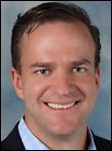

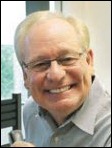
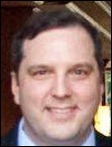

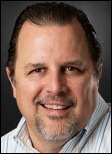
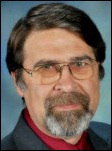
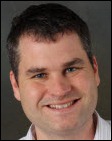

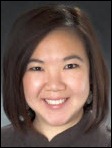
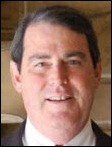
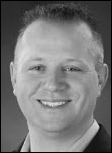

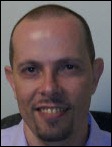
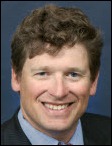

















































































The problem with the operating vs. capital expenses argument is that it is a purely financial argument. What is persistently…